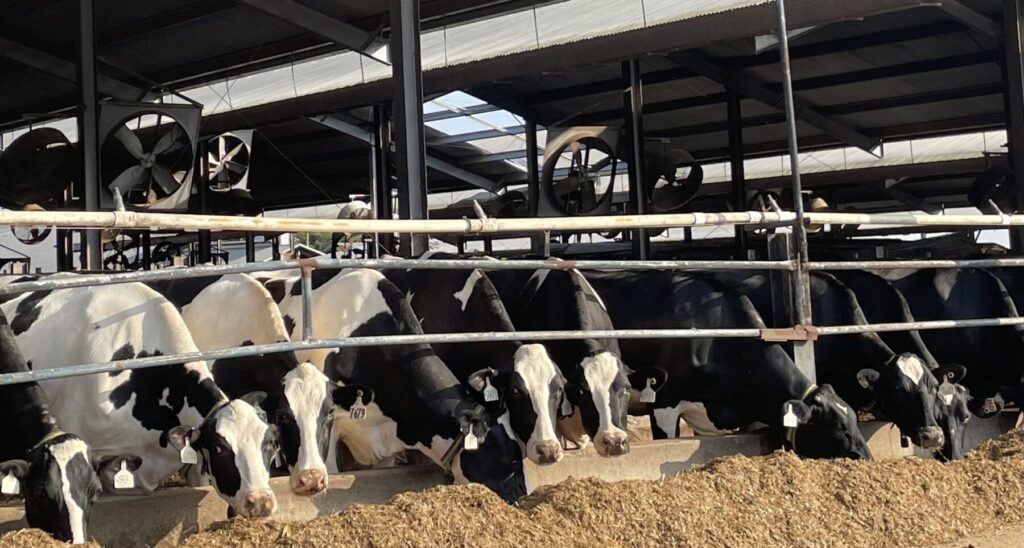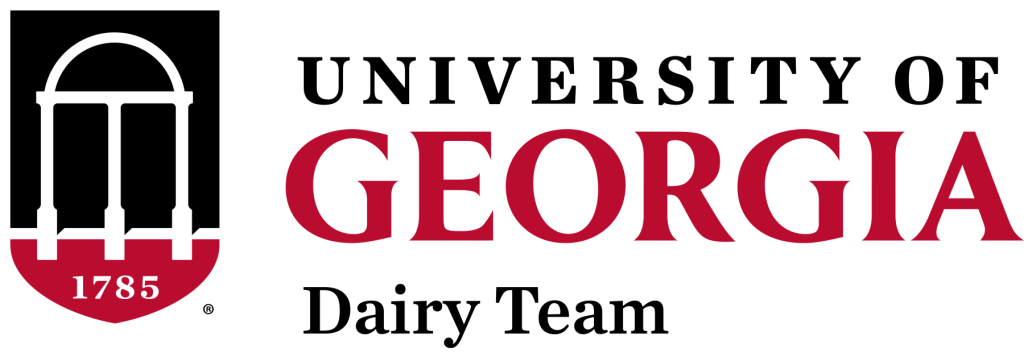Jing Gao, Ph.D. Candidate
Sha Tao, Ph.D., Associate Professor, stao@uga.edu/706-542-0658
Department of Animal and Dairy Science, UGA
Vaccination at dry-off is a standard practice commonly used on U.S. dairy farms. This procedure serves two primary purposes: (1) it provides protection against common diseases during the dry period, such as coliform mastitis, and (2) it improves colostrum quality, which is crucial for the health of newborn calves. From a herd management perspective administering dry cow vaccination on or near the day of dry-off is convenient because it can be combined with other dry cow therapies, saving time and labor by consolidating tasks into a single day. However, this widely adopted approach has a drawback: it can trigger systemic inflammation that persists from the day of milking cessation into the early dry period. This is evidenced by elevated circulating levels of haptoglobin, an inflammation marker, during the first week of dry period. This upregulated systemic inflammation could present a challenge, as the mammary gland undergoes a critical process called mammary involution during the early dry period. During this time, the mammary tissue undergoes extensive involution and regeneration, including the turnover of mammary epithelial cells (the cells responsible for milk synthesis). Prolonged or excessive inflammation may interfere with this process, potentially affecting mammary gland health and subsequent milk production.
To examine how upregulated inflammation in the early dry period affects cow performance, the University of Georgia Dairy Team conducted studies across multiple commercial dairy farms in Georgia, involving over 400 Holstein dairy cows. The research aimed to evaluate the effects of different dry cow vaccination schedules—administering the vaccine around two weeks before dry-off versus near the day of dry-off—on systemic inflammation, immunity, subsequent lactation performance, and overall animal health. Before delving into the results, we want to express our deepest gratitude to the cooperative dairy producers who made this study possible. Their unwavering support and generous contributions were invaluable to the success of our trials.

Key Findings
1. Systemic Inflammation: Regardless of timing, administering dry cow vaccination induced a robust systemic inflammatory response. However, advancing the timing of vaccination successfully reduced systemic inflammation after dry-off. Importantly, when dry cow vaccination was administered earlier, the process of drying-off itself (including reduced milking frequency and feed restriction) did not trigger systemic inflammation. This suggests that the vaccination, rather than the drying-off process, is a major contributor to the upregulated inflammation around this critical period.
2. Milk Yield Before Dry-Off: Advancing dry cow vaccination was associated with a temporary reduction in daily milk yield, particularly one day after vaccination. On average, cows experienced a reduction of 4–6 kg/day, with high-producing cows being more sensitive to this effect. However, this reduction diminished as cows approached dry-off. The decrease in milk production may result from the energy demands of immune activation, as the immune system diverts energy substrates, such as glucose, away from milk production to support an inflammatory response.
3. Subsequent Lactation Performance: Long-term performance varied by parity. Among primiparous cows, advancing dry cow vaccination had no effects on milk production during the next lactation, up to 280 days in milk (DIM). Conversely, multiparous cows (those with more than one calving) showed notable benefits, with an average increase of 1.9 kg/d (=4.2 lbs/d) in milk yield and higher milk fat content throughout the subsequent lactation.
While additional analyses on overall health are ongoing, these preliminary findings highlight the importance of re-evaluating the timing of dry cow vaccination. Despite requiring adjustments in labor scheduling and causing a temporary reduction in milk yield before dry-off, advancing vaccination showed potential benefits, particularly for multiparous cows. Improved milk yield and milk fat content in the next lactation suggests that this approach may enhance mammary gland regeneration during the dry period, improving the udder’s capacity and efficiency to produce milk, thereby optimizing milk production.
A Step Toward Sustainability
Advancing dry cow vaccination could serve as a valuable management strategy for optimizing milk production in subsequent lactations, improving farm profitability, and promoting more sustainable dairy production practices. This strategy not only benefits dairy producers but also supports the broader industry by aligning production efficiency with animal health and welfare.
This work is supported by the Agriculture and Food Research Initiative – Critical Agriculture Research and Extension Program, project award no. [2024-68008-42644], from the U.S. Department of Agriculture’s National Institute of Food and Agriculture.
